Some animals are so bizarre, unique, or downright quirky that they seem like they belong in a fantasy novel rather than our world. From creatures that never grow up to those that look like they were assembled from leftover parts, the animal kingdom is full of surprises.
1. The Axolotl: The Eternal Teenager Of The Animal Kingdom
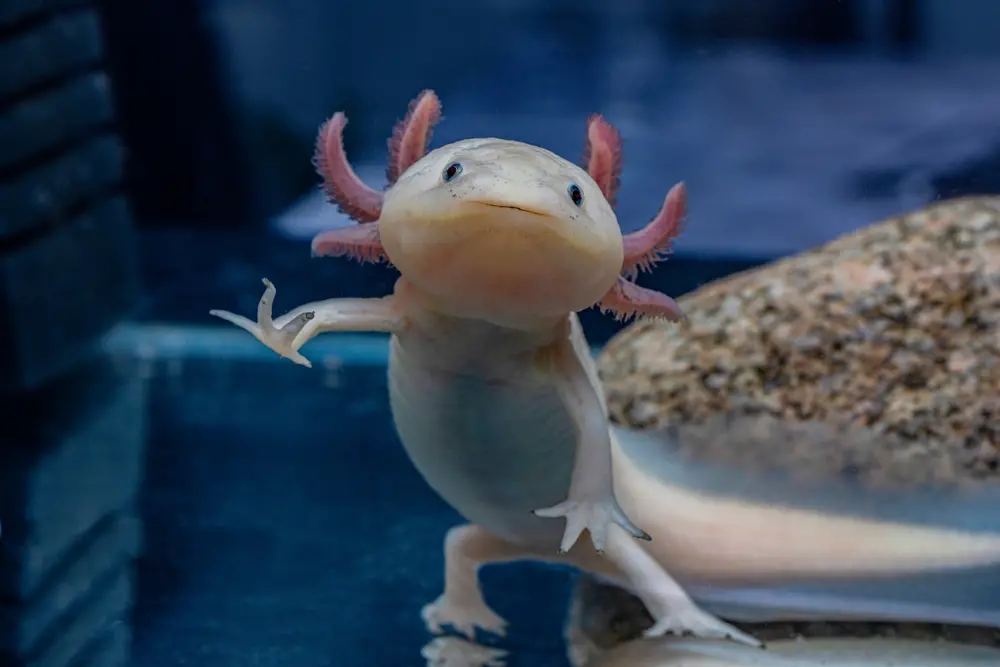
The axolotl is like that one kid from high school who never seemed to grow up. Unlike most amphibians, Tech Acute points out that these creatures never undergo metamorphosis, meaning they retain their juvenile features throughout their lives. Imagine being stuck in your teenage years forever—sounds like fun, right? They have a goofy grin that makes them look like they’re perpetually in a good mood, and those feathery gills sticking out of their heads look like they’re wearing headbands from an ’80s workout video. But don’t let their cuteness fool you; they’re fierce predators in their aquatic world.
These creatures are also scientific marvels, famous for their incredible regenerative abilities. They can regrow lost limbs, and even parts of their heart and brain, which has researchers intrigued for potential applications in human medicine. Unfortunately, they’re critically endangered in the wild due to pollution and habitat loss in their native Mexico. So next time you see one in a pet store, remember you’re looking at a real-life magic trick in need of a little help to stick around.
2. The Platypus: An Animal That Looks Like It Was Assembled By Committee
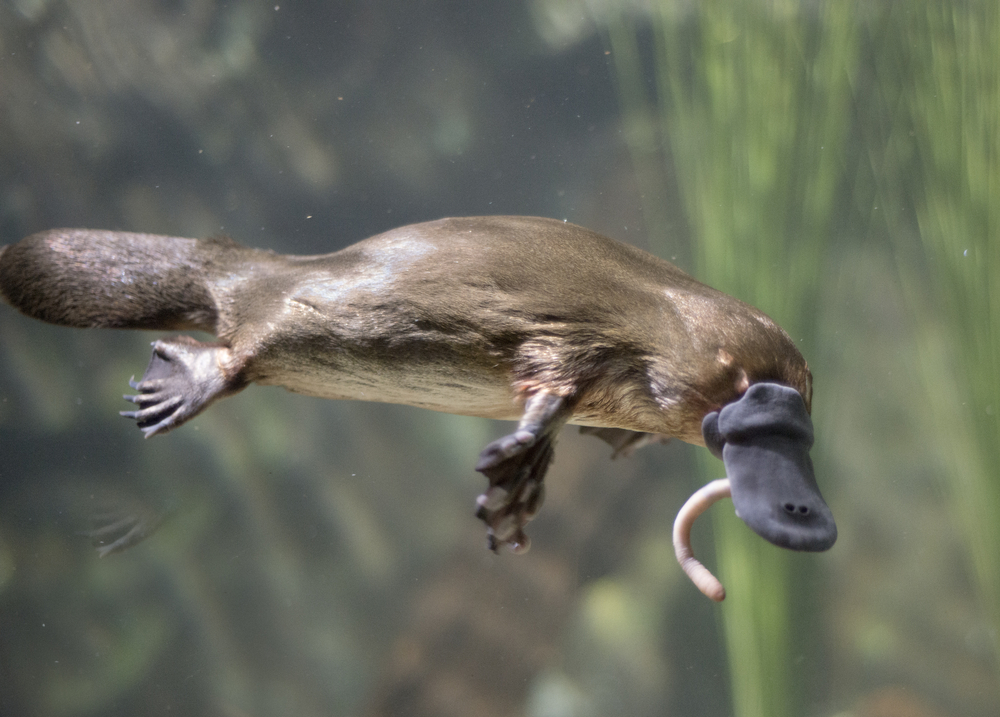
If there was ever an animal that looks like it was designed by a committee that couldn’t agree on anything, it’s the platypus. As noted by Britannica, the platypus is a small amphibious Australian mammal noted for its odd combination of primitive features and special adaptations, especially the flat, almost comical duck-bill-like bill. Oh, and did we mention it’s one of the few mammals that lay eggs? Day-to-day life for a platypus involves hunting underwater using electroreception, which is like having built-in Wi-Fi to detect prey.
This puzzling critter is also venomous, with males having a spur on their hind limbs that can deliver a painful sting. Imagine going on a nature hike in Australia and thinking, “Oh, a cute little platypus!” only to find out it can bite back. The venom isn’t lethal to humans but can cause swelling and severe pain. So, while it looks like a cuddly cartoon character, this is one creature you probably want to admire from a safe distance.
3. The Naked Mole Rat: The Superhero Of The Rodent World
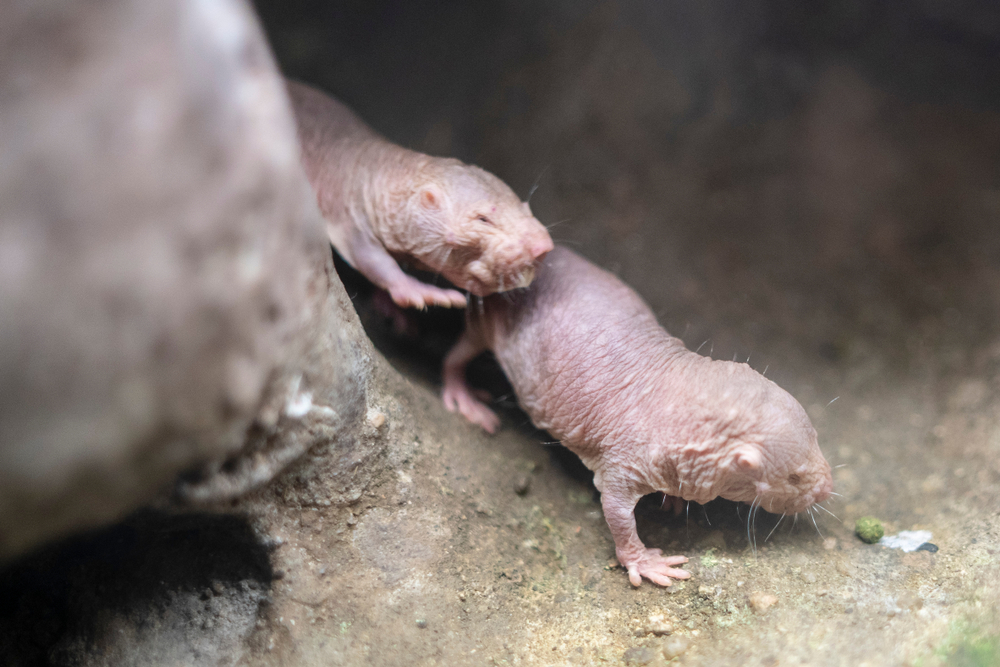
Ever seen a creature so bizarrely ugly that it’s kind of cute? Meet the naked mole rat, a true oddball in the animal kingdom that looks like a sausage with teeth. These guys live underground in large colonies, and what’s fascinating is their social structure, which resembles that of bees and ants. They have a queen who is the only breeding female, while the rest of the colony works to keep things running smoothly. Despite their wrinkly, hairless appearance, these rodents are superheroes in disguise.
Naked mole rats have an extraordinary resistance to cancer, pain, and even aging! They can survive low oxygen levels that would be fatal to other animals, making them subjects of intense scientific research. And get this—they can live up to 30 years, which is unheard of for rodents. So the next time you see a picture of one and think it’s just a weird-looking rat, remember that it’s actually a long-living, cancer-resistant wonder of nature.
4. The Blobfish: The Poster Child For Unfortunate Appearances
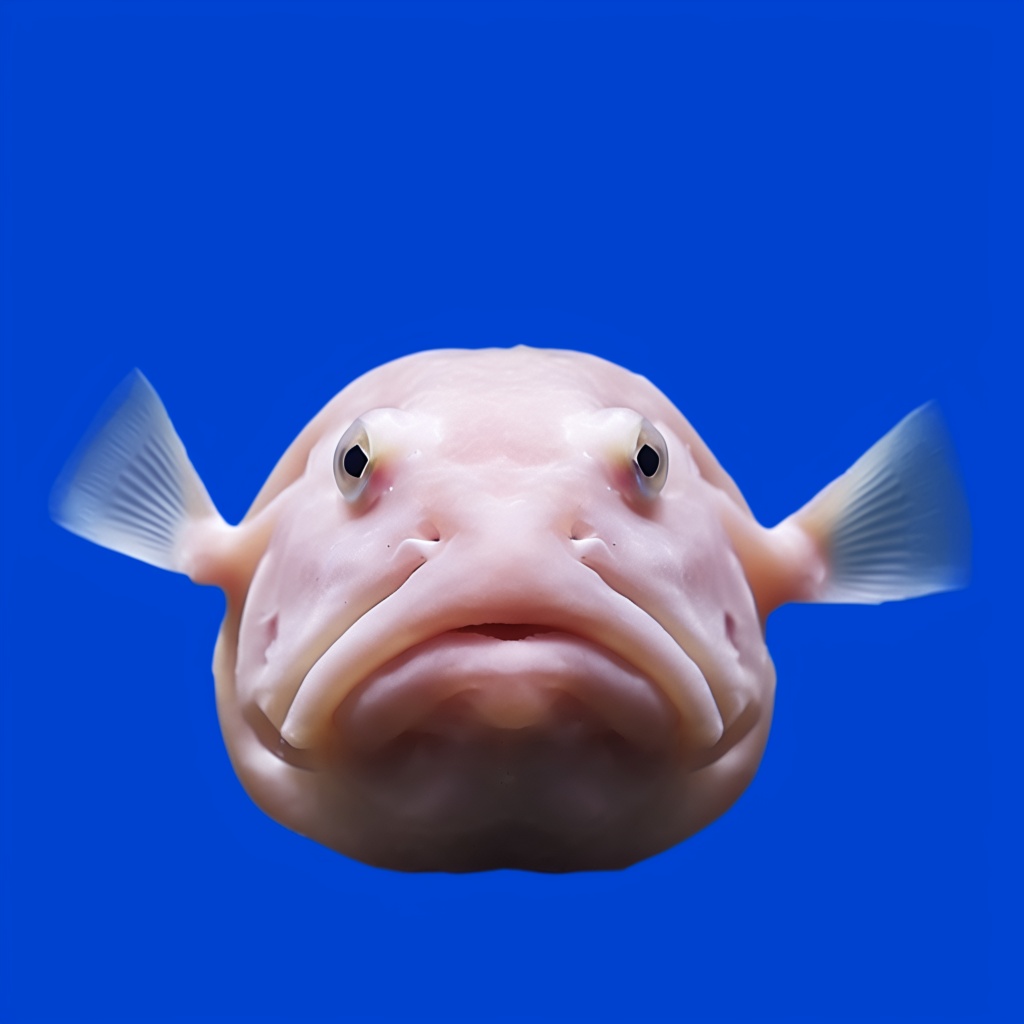
The blobfish might just win the award for the world’s ugliest animal. This deep-sea dweller is more famous for its appearance out of water, where its gelatinous body collapses into a puddle of sad, saggy skin. Imagine waking up in the morning, looking in the mirror, and thinking, “Well, at least I’m not a blobfish.” In its natural habitat, the high-pressure environment of the deep sea, it looks a lot more like a regular, albeit chubby, fish. It’s like a real-life version of those before-and-after pictures, only in reverse.
Despite its unfortunate looks after being brought to the surface, the blobfish is a fascinating creature of the deep. It has evolved to survive in a world with crushing pressure, where it floats around waiting to suck up any edible morsels drifting by. There’s a certain charm in its simplicity—it’s not trying to win any beauty contests; it’s just trying to live its best life. So next time you’re having a bad hair day, just remember: it could be worse, you could be a blobfish.
5. The Star-Nosed Mole: The Animal With The Creepiest Nose
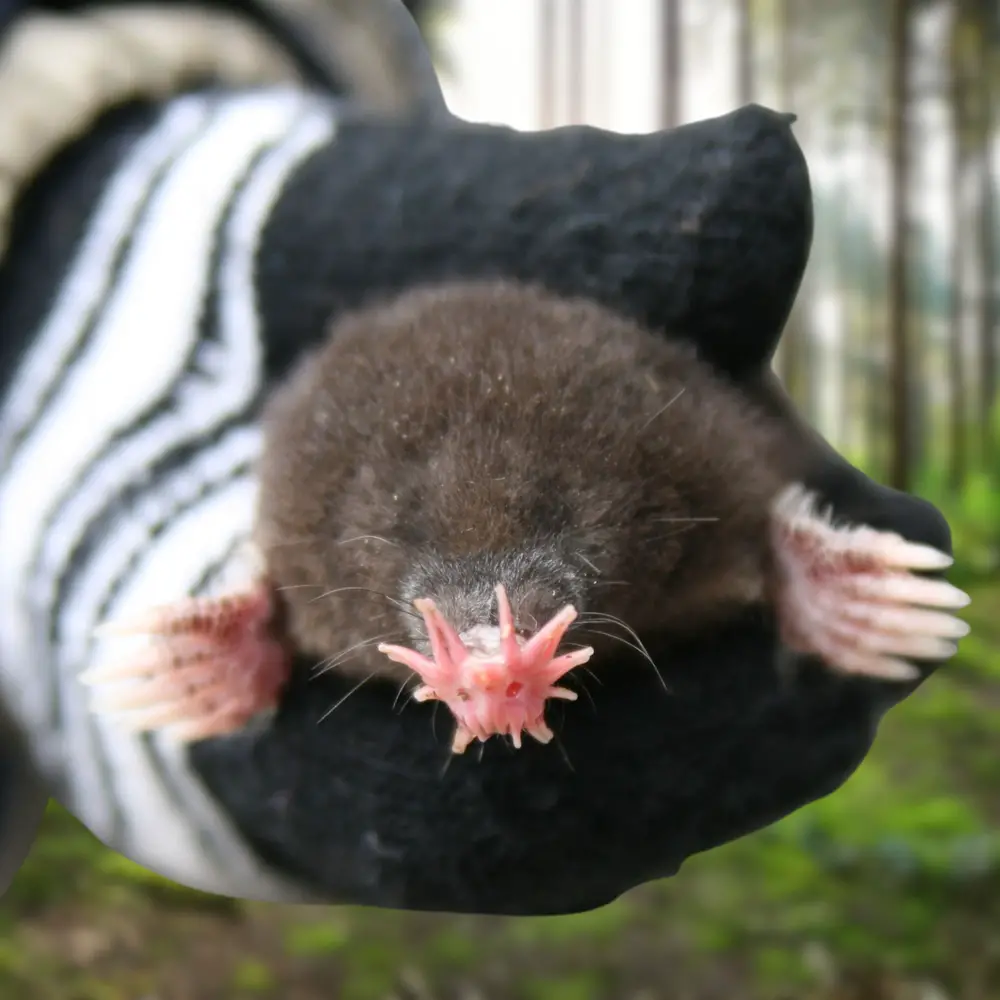
If you’re a fan of weird animal features, the star-nosed mole is one creature you can’t ignore. Its nose looks like something out of a sci-fi movie, with 22 pink, fleshy tentacles fanning out around its snout. This bizarre appendage is not just for show—it’s an incredible sensory organ that makes the star-nosed mole one of the fastest foragers in the animal kingdom. The tentacles are covered in thousands of sensory receptors, allowing this mole to detect food with incredible speed and accuracy.
This mole might look strange, but its unique sensory system is a marvel of evolution. It can identify and consume prey faster than you can blink, making it a highly efficient hunter. The star-nosed mole lives in swampy wetlands, where it uses its keen sense of touch to navigate through the murky waters. So while its appearance might be a bit unsettling, there’s no denying the star-nosed mole is a fascinating example of nature’s ingenuity.
6. The Aye-Aye: The Lemur With A Bewitching Finger
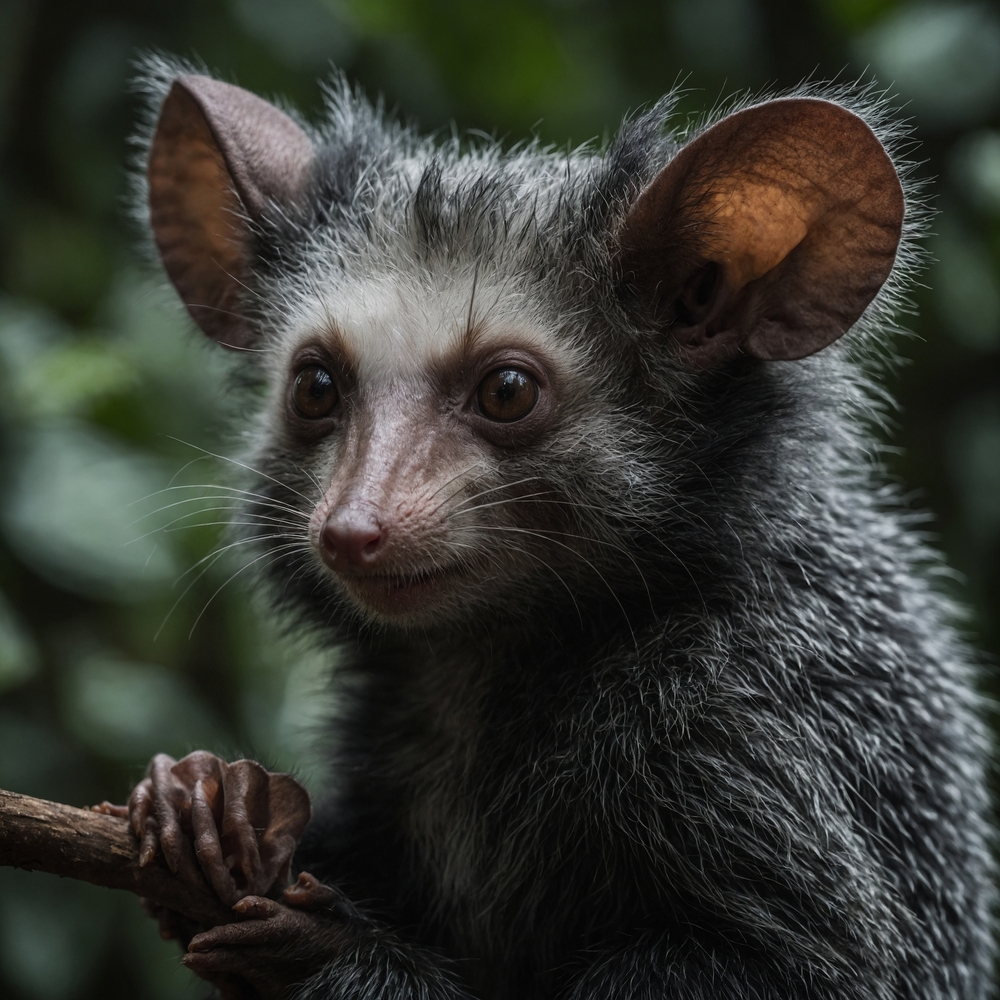
Meet the aye-aye, a lemur that hails from Madagascar and sports a look only a mother could love. With its wide eyes, bushy tail, and bony middle finger, the aye-aye looks like it could be the star of a Halloween special. This nocturnal primate uses its long, spindly finger to tap on trees and locate insect larvae hiding inside. It’s like the animal kingdom’s version of X-ray vision but way creepier.
The aye-aye’s unusual appearance and nighttime habits have led to a lot of myths and superstitions among locals, with some believing it brings bad luck. In reality, the aye-aye is harmless and plays a crucial role in controlling insect populations. Unfortunately, these beliefs have led to the aye-aye being killed in some areas, contributing to its status as an endangered species. So next time you’re spooked by a picture of one, remember that this little creature is more an ally than an omen.
7. The Narwhal: The Unicorn Of The Sea
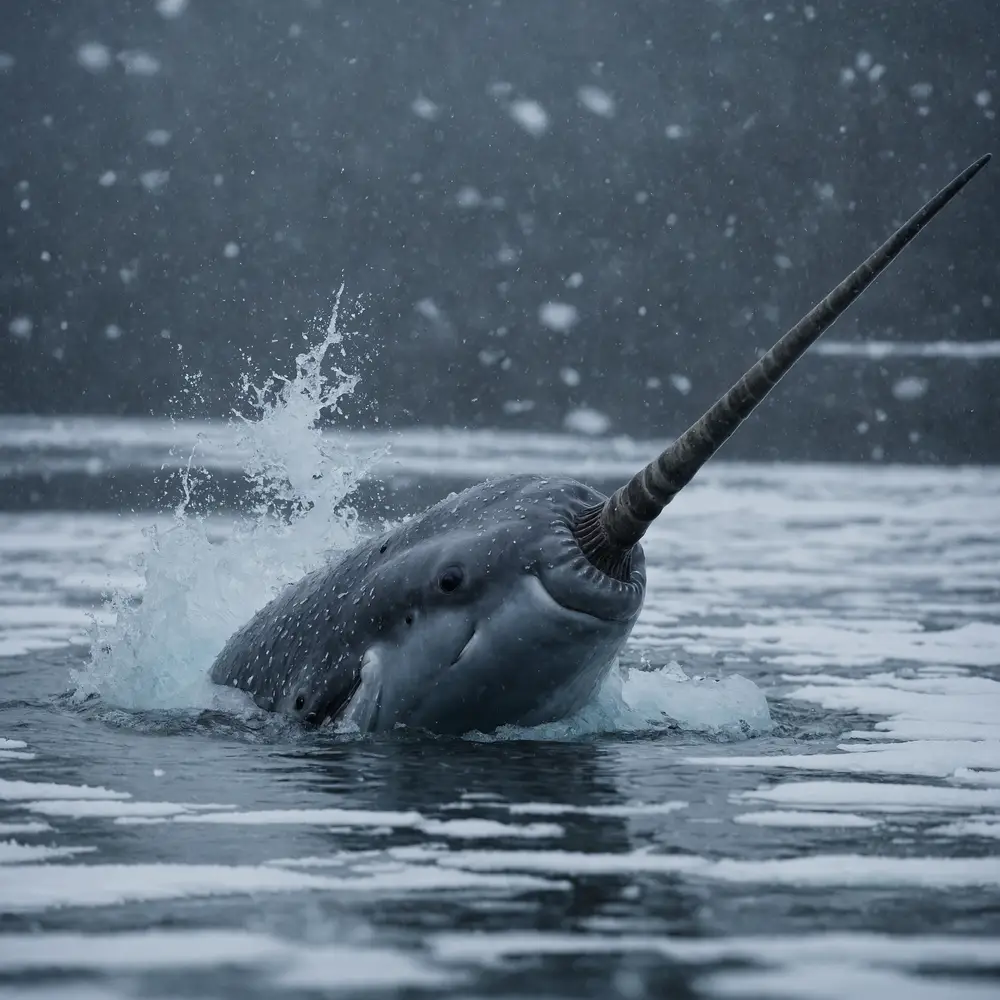
The narwhal is the real-life inspiration for all those unicorn myths and legends. With its long, spiral tusk protruding from its head, it looks like something out of a fantasy novel. But this isn’t just a mythical creature; it’s a whale that lives in the Arctic waters. The tusk, which is actually an elongated tooth, can grow up to 10 feet long and is thought to have sensory capabilities, helping narwhals detect changes in their environment.
Despite their majestic appearance, narwhals are still a bit of an enigma to scientists. We know they use their tusks in mating rituals and possibly for breaking through ice, but many aspects of their lives remain a mystery. Unfortunately, climate change and human activities pose threats to their icy habitats. So while they might be the stuff of legends, narwhals need our help to ensure they don’t become mythical once again.
8. The Tardigrade: The Indestructible Micro Animal
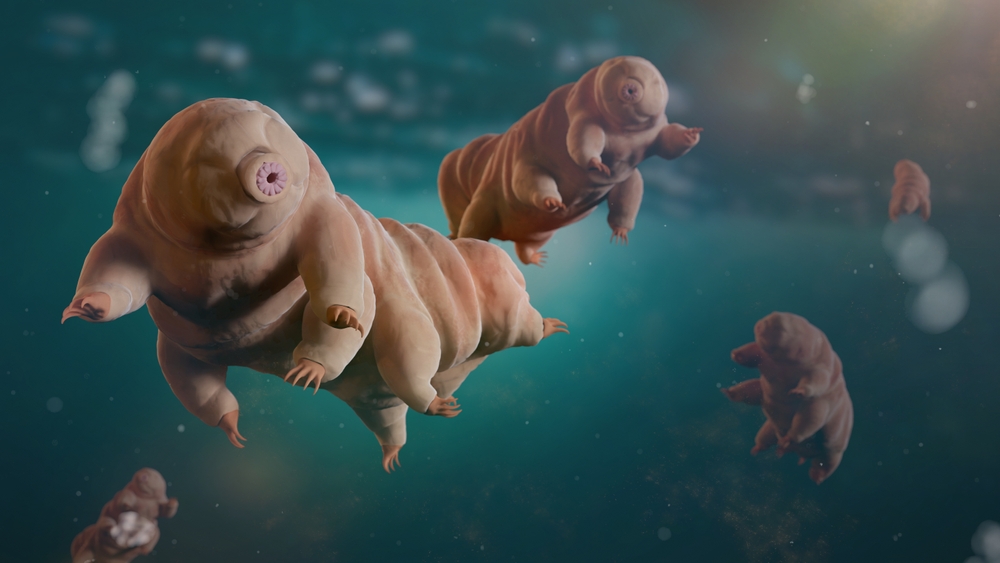
Tardigrades, also known as water bears, are microscopic creatures that look like tiny, eight-legged gummy bears. Don’t let their size fool you; these little guys are some of the most resilient animals on Earth. They can survive extreme conditions that would obliterate most other life forms, including freezing temperatures, scorching heat, and even the vacuum of space. Imagine a creature that can casually shrug off situations that sound like the start of a disaster movie.
Scientists have even revived tardigrades after they’ve been frozen for decades, proving they have an incredible ability to enter a state of suspended animation. Their resilience has made them a subject of fascination for researchers, who are studying them to unlock the secrets of their survival tactics. While they might not win any beauty contests, tardigrades are a testament to nature’s ability to adapt and endure. They might be tiny, but their toughness is nothing short of legendary.
9. The Proboscis Monkey: The Primate With A Comical Snout
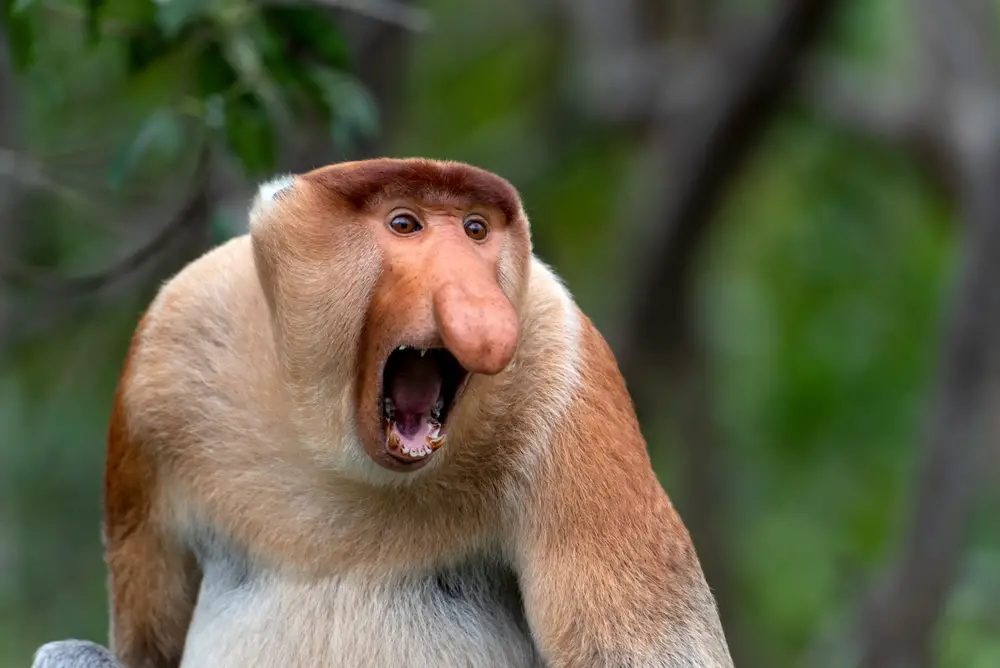
The first thing you’ll notice about the proboscis monkey is its large, pendulous nose, which looks like something out of a comedy sketch. But this feature isn’t just for laughs; it plays a role in attracting mates. The bigger the nose, the more enticing the male is to females, which might be a reminder that beauty is truly in the eye of the beholder. These monkeys are native to the rainforests of Borneo and are often found leaping from tree to tree with surprising agility.
While their noses might get all the attention, proboscis monkeys are fascinating creatures with complex social structures and behaviors. They live in groups and communicate through a range of vocalizations and gestures. Unfortunately, habitat destruction is threatening their populations, making them another species in need of conservation efforts. So next time you see a picture of one, remember that behind the funny nose is a seriously impressive animal worth protecting.
10. The Leafy Sea Dragon: The Underwater Dragon Of Dreams
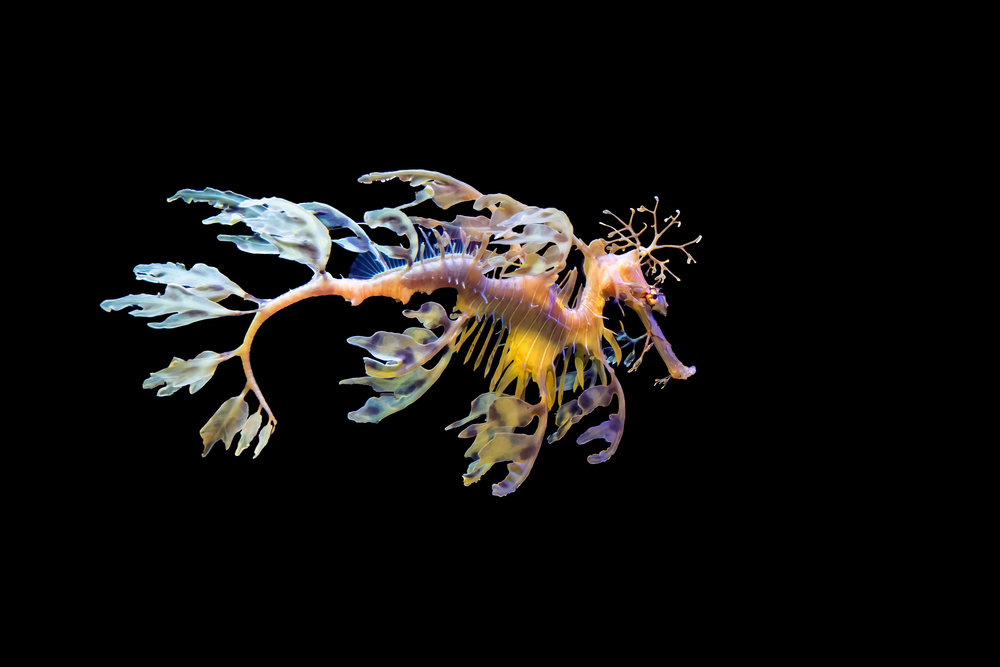
The leafy sea dragon looks like a piece of seaweed that decided it wanted to try being an animal. Covered in leaf-like appendages, this creature is a master of disguise in the underwater world. It hails from the waters around southern and western Australia, where it drifts through the sea looking like part of the kelp forest. This camouflage not only protects it from predators but also makes it an effective hunter.
Leafy sea dragons feed on tiny crustaceans and plankton, and their slow, rhythmic movements help them blend in with the swaying sea plants around them. Despite their delicate appearance, these animals are tough survivors, though they face threats from pollution and habitat destruction. Watching a leafy sea dragon move through the water is like seeing a piece of art come to life. They may not breathe fire, but these underwater dragons are every bit as enchanting as their mythical namesakes.
11. The Saiga Antelope: The Critter With A Comically Large Nose
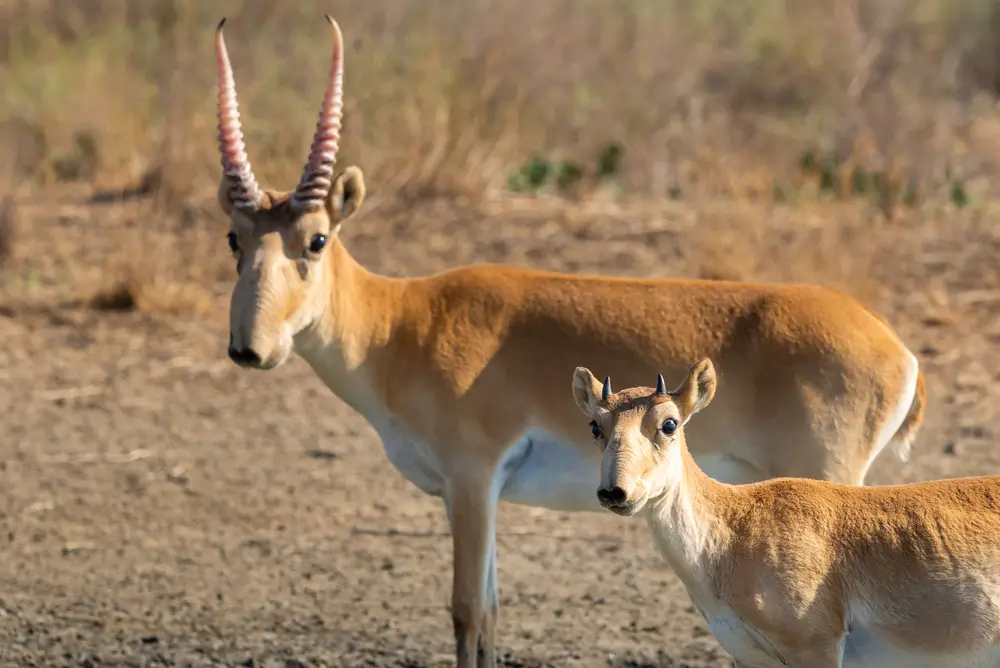
The saiga antelope looks like it walked straight out of a Dr. Seuss book, thanks to its oversized, bulbous nose. But this strange feature is actually a clever adaptation that filters out dust in the summer and warms cold air in the winter. Found in the steppes of Central Asia, saigas are migratory animals that travel in large herds. Their distinctive snout might look peculiar, but it’s a vital tool for surviving in their harsh environment.
Unfortunately, these unique antelope are critically endangered due to poaching and habitat loss. Conservationists are working hard to protect them, but their numbers remain perilously low. Their plight serves as a reminder of the delicate balance in nature and the importance of protecting even the weirdest-looking creatures. So while the saiga might not win any beauty pageants, it deserves our admiration and protection for its incredible adaptability and resilience.
12. The Komondor: The Dog That Looks Like A Walking Mop
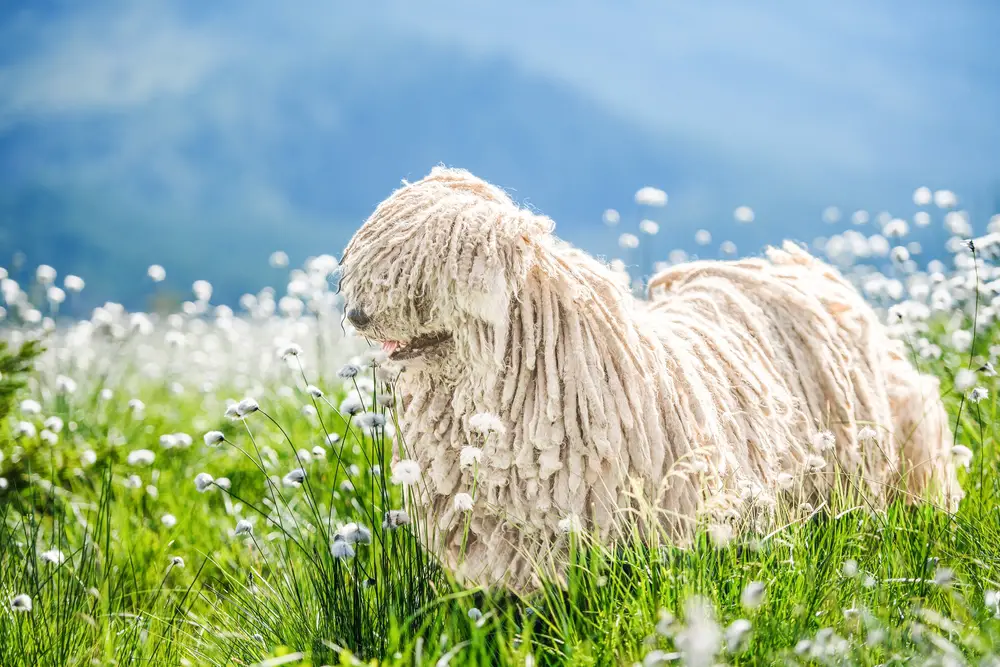
If you’ve ever seen a Komondor, you might mistake it for a mop that grew legs and decided to go for a walk. This Hungarian sheepdog is famous for its long, corded coat that resembles thick dreadlocks. The unique fur serves a purpose beyond fashion—it provides protection from harsh weather and helps the dog blend in with the sheep it guards. Despite their heavy coats, Komondors are agile and athletic, making them excellent herding dogs.
Their unusual appearance requires a lot of grooming to maintain, but any Komondor owner will tell you it’s worth it for the companionship of such a loyal and protective breed. These dogs are known for their intelligence and independence, which can make training a challenge but also incredibly rewarding. So the next time you see one, remember there’s more to this mop-like dog than meets the eye; it’s a dedicated guardian with a heart as big as its coat.
13. The Pistol Shrimp: The Underwater Gunslinger
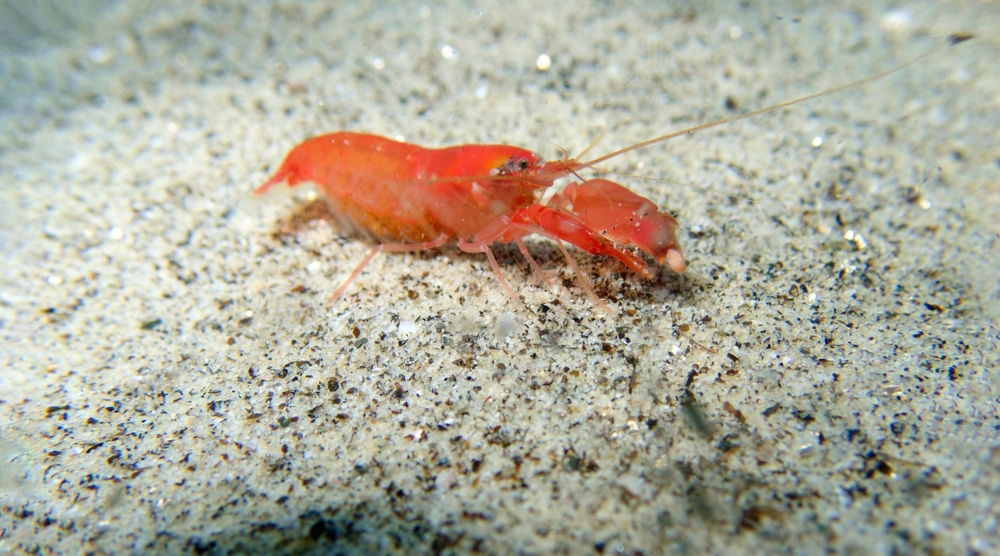
The pistol shrimp might look unassuming, but it’s packing some serious heat in the underwater world. This little crustacean can snap its claw shut with such force that it creates a bubble that bursts with a sound louder than a gunshot. And get this—the process generates a flash of light and temperatures as hot as the sun’s surface! Talk about bringing the heat to a fight.
Pistol shrimp use their powerful claws to stun prey, making them formidable hunters despite their small size. They live in burrows and often form symbiotic relationships with goby fish, who act as lookouts while the shrimp keeps the home tidy. These shrimp may be tiny, but their explosive abilities make them one of the ocean’s most fascinating warriors. So next time you’re near the sea, think twice about underestimating the little guys—they might just have a big surprise in store.
14. The Dumbo Octopus: The Adorably Odd Deep-Sea Diver
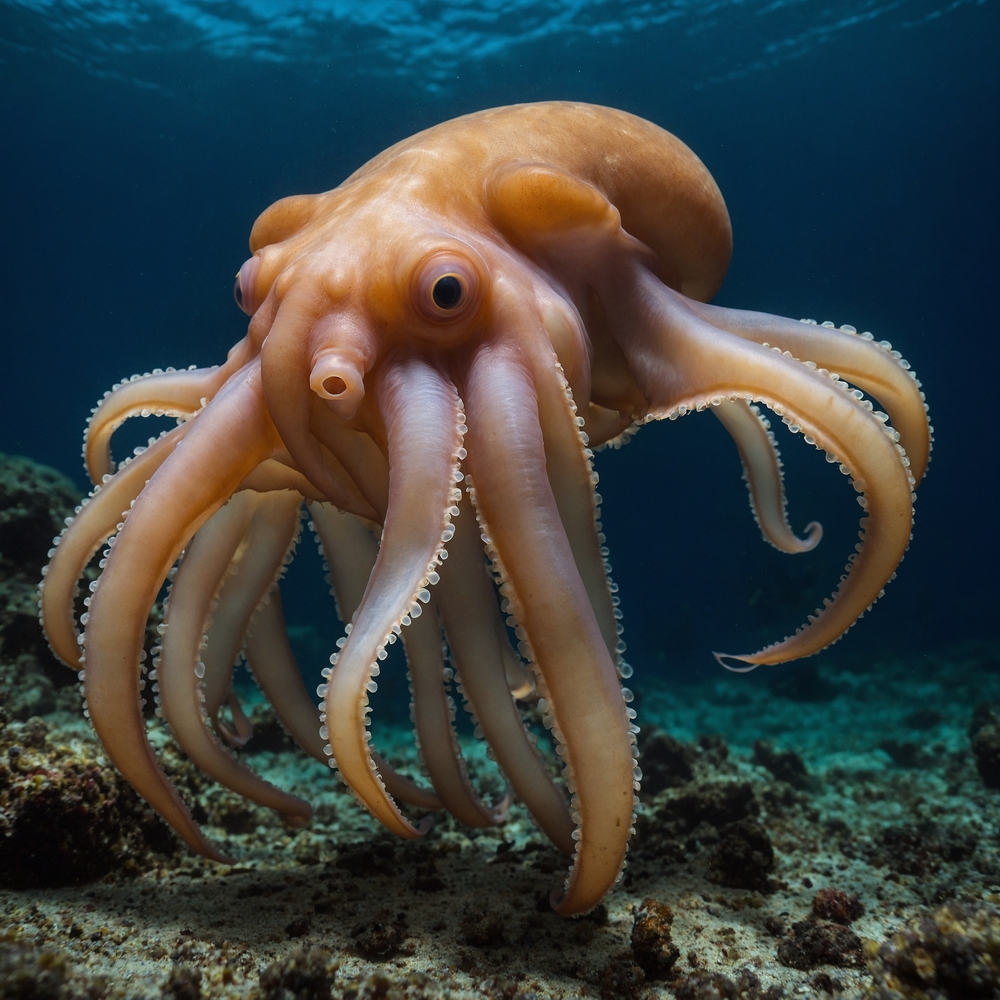
The Dumbo octopus is one of the cutest creatures you might never get to see in person, thanks to its habitat deep in the ocean. Named after Disney’s Dumbo, this squid-like creature has ear-like fins on its head that resemble the famous flying elephant’s ears. These creatures drift through the deep sea with graceful flaps of their fins, exploring depths where few others venture. They look like a cross between a cartoon character and an alien life form, making them irresistibly charming.
Despite their cute appearance, Dumbo octopuses are effective predators, feeding on worms and small crustaceans on the ocean floor. They use their arms to feel around for food and can even crawl along the seabed. Each species of Dumbo octopus has adaptations suited to its environment, showcasing the incredible diversity of life in the ocean. So while they might look like they belong in an animated film, these deep-sea dwellers are the real stars of the underwater world.
15. The Cassowary: The Modern-Day Dinosaur With A Nasty Kick
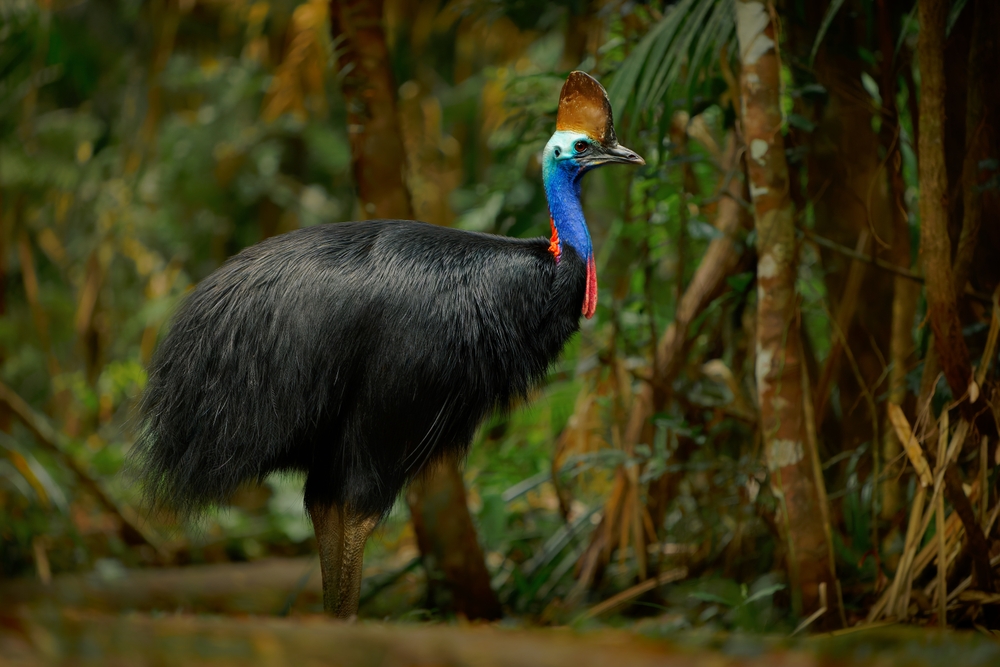
The cassowary is a bird that looks like it wandered out of the Jurassic era, complete with a striking blue hue and a helmet-like casque on its head. Found in the rainforests of Australia and New Guinea, this flightless bird is often regarded as the most dangerous bird in the world. It has powerful legs with dagger-like claws that can deliver a serious kick to any potential threat. Imagine encountering a bird that could easily be cast as a velociraptor in a dinosaur movie.
Despite their fearsome reputation, cassowaries are generally shy and prefer to avoid humans. They play a vital role in their ecosystems by dispersing seeds through their droppings, making them essential for forest regeneration. The casque on their head might look decorative, but it’s thought to help them move through dense vegetation or even communicate with low-frequency sounds. So while it might not be your typical backyard bird, the cassowary is an incredible creature that bridges the gap between the age of dinosaurs and the present day.
